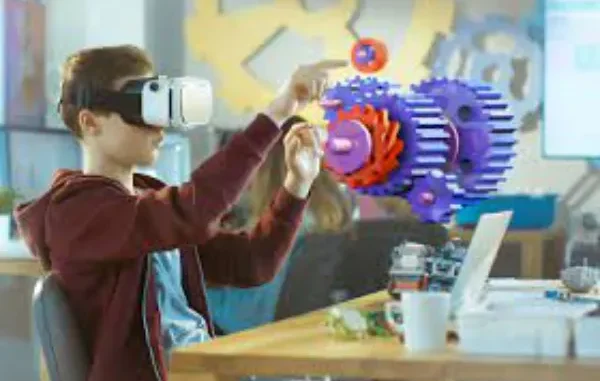
Augmented Reality (AR) is a technology that overlays digital content and information onto the physical world, blending virtual elements with real-world environments in real-time. In education, AR enhances learning experiences by providing interactive and immersive content that supplements traditional instructional materials.
Key Components of AR in Education
- Interactive Learning: AR enables students to interact with digital objects, simulations, and information overlaid onto physical objects or environments, fostering active engagement and participation in the learning process.
- Visualization and Exploration: AR facilitates visualization of abstract concepts, complex phenomena, and spatial relationships with situs slot, allowing students to explore and manipulate 3D models, diagrams, and simulations in a hands-on manner.
- Personalized Learning: AR applications can adapt content and experiences to individual learning styles, preferences, and pace, providing personalized and differentiated instruction tailored to each student’s needs.
Transformative Impact of AR in Education
Enhancing Engagement and Retention
AR enhances student engagement and retention by providing immersive and interactive learning experiences that capture attention, stimulate curiosity, and promote active participation. By incorporating gamification elements, storytelling, and hands-on activities, AR makes learning more enjoyable and memorable for students.
Facilitating Experiential Learning
AR enables experiential learning by simulating real-world environments, scenarios, and experiments that would otherwise be impractical or inaccessible in traditional classroom settings. Students can explore historical landmarks, dissect virtual organisms, and conduct scientific experiments in a safe and controlled virtual space, enhancing their understanding and mastery of complex concepts.
Opportunities and Challenges
Opportunities for Innovation and Collaboration
AR presents opportunities for innovation and collaboration in education, including partnerships between educators, technology developers, and content creators to design and implement immersive learning experiences. By leveraging AR tools and platforms, educators can create customized and interactive content that aligns with curriculum objectives and promotes student learning outcomes.
Addressing Access and Equity
Challenges to AR adoption in education include access to technology, infrastructure limitations, and equity concerns related to disparities in digital access and resources among students and schools. Overcoming these challenges requires investment in technology infrastructure, professional development for educators, and inclusive design practices that prioritize accessibility and diversity in AR content and applications.
Conclusion
Augmented Reality (AR) holds great promise for transforming education by enhancing learning experiences, engaging students, and fostering creativity and innovation in the classroom. By providing interactive and immersive content that supplements traditional instructional materials, AR enriches learning environments, promotes active engagement, and facilitates deeper understanding and retention of complex concepts. However, realizing the full potential of AR in education requires addressing challenges such as access, equity, and digital literacy while embracing opportunities for jpslot innovation, collaboration, and personalized learning. As AR continues to evolve and become more accessible, it has the potential to revolutionize teaching and learning, empowering students to explore, create, and succeed in the digital age.

Leave a Reply